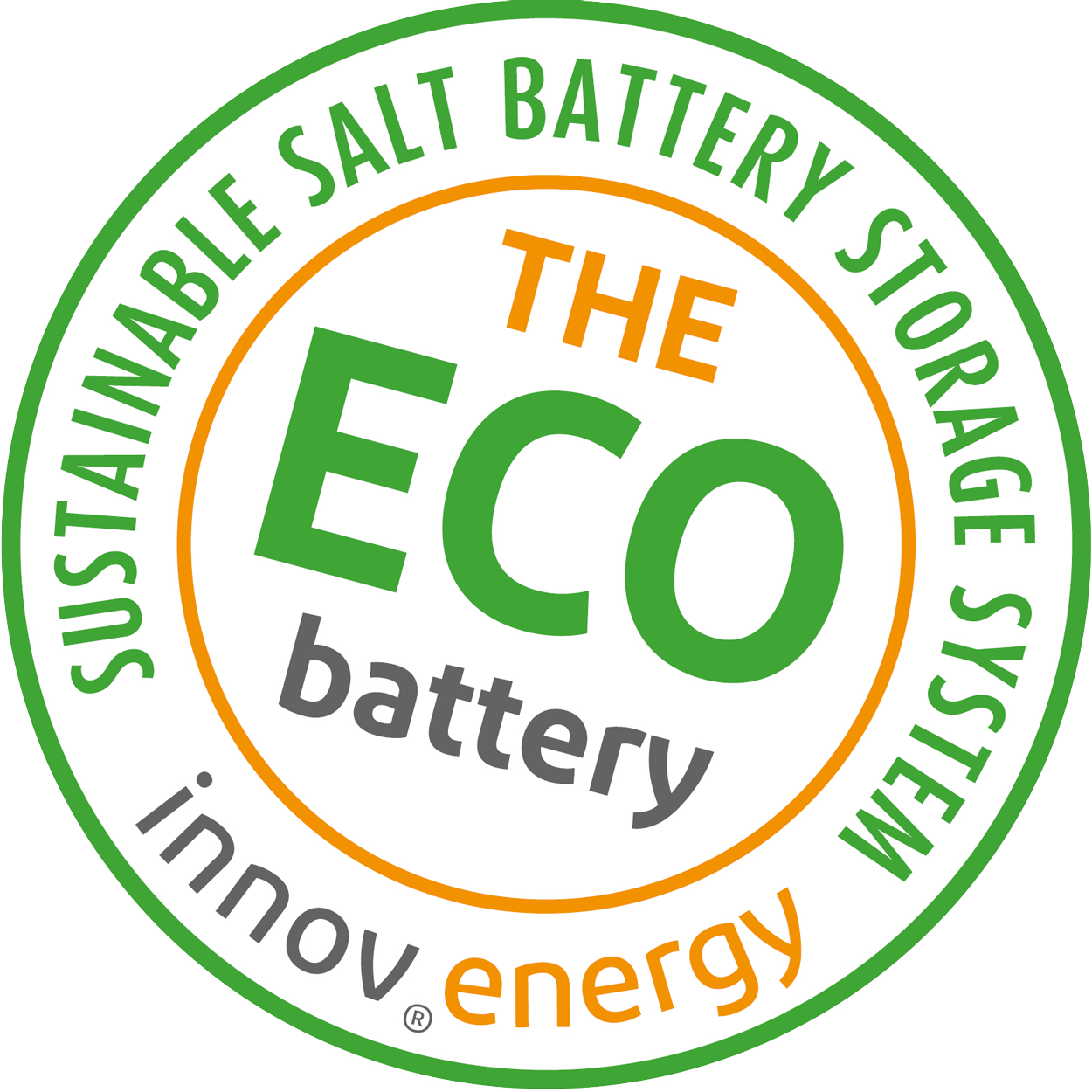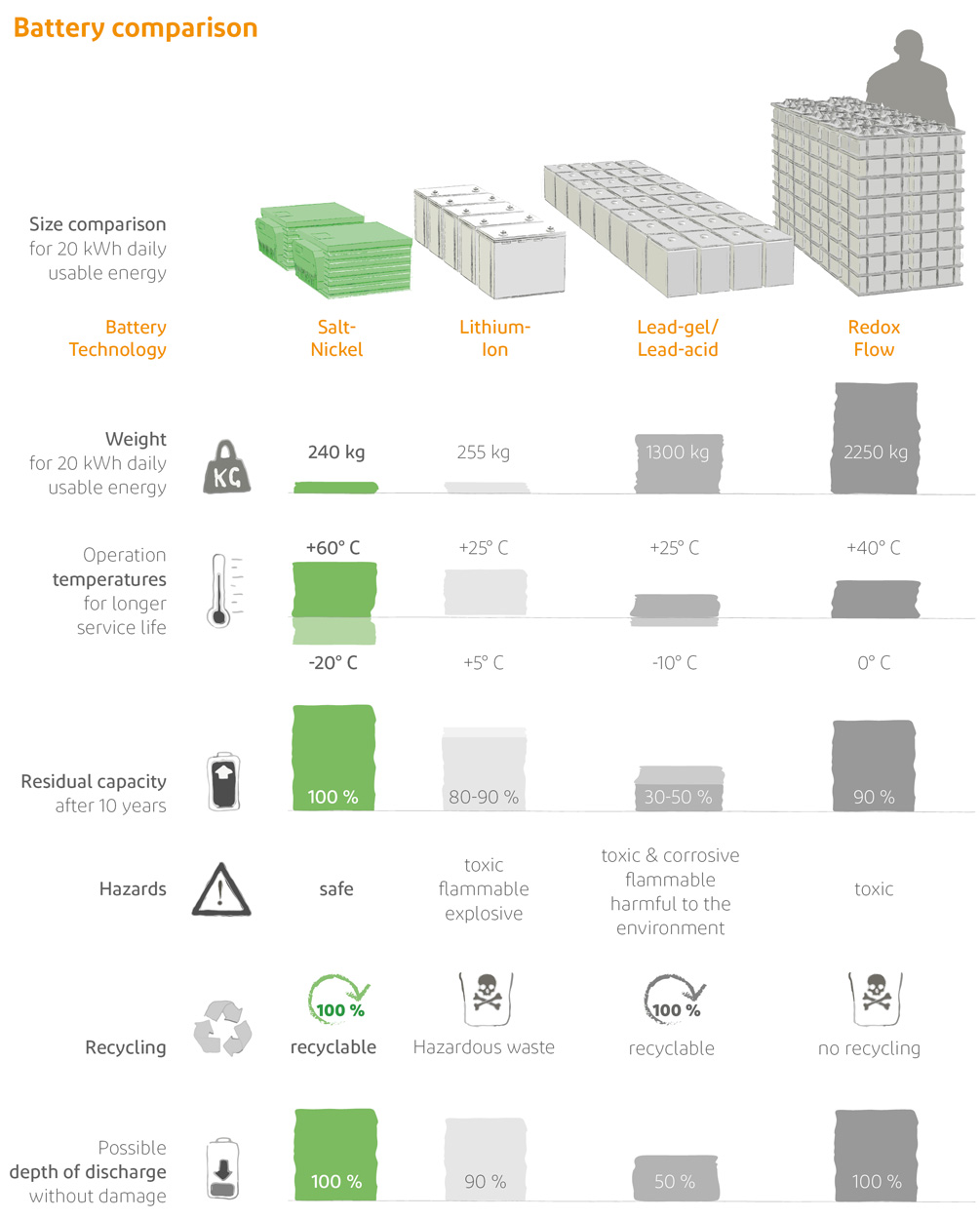False facts
If you have landed on this page, you have probably been the victim of a non-scientific, paid study. Supposedly, our products were tested, which was not the case in fact. Furthermore, references are made to us with false performance values. For clarification: The salt battery has a battery efficiency of 90 % in the standard cycle.

Info-Webinar "Store with salt!"
Learn all about salt battery storage systems in a live webinar.
Here we are also available to answer your direct questions.

Before you start the next global waste problem, with non-recyclable discarded lithium-ion batteries...
just try an ecological and safe salt storage system!
More about the salt technology, which has already been used for more than 20 years.
More about our salt battery products and the battery efficiency of over 90 % !
More about our history as a rising star in the market.
Advantages of the salt battery
Salt batteries ...
- are made of harmless materials.
- Battery efficiency 90 % in standard cycle.
- are 100 % recycled.
- promote Swiss and European value chains.
- are absolutely safe (non-flammable, non-explosive).
- require no additional construction measures (no fire protection, no temperature control, no ventilation).
- can be installed almost anywhere - it has to be dry (cellar, garage, shed, attic, etc.).
- run even under extreme temperatures from -20° to +60° C.
- can be completely deep-discharged or put into hibernation.
- have a service life of at least 15 years and are maintenance-free.
- are extremely robust and have a high energy density (like LIB).
Disadvantages of the salt battery
Salt batteries ...
- are not performance batteries for high charge and discharge currents.
- require some internal energy to maintain the working temperature.
- are high-priced because they are not produced in low-wage countries and do not enjoy the economies of scale of high production volumes.
The salt battery compares favourably with other batteries!
In terms of size and weight, the salt battery has approximately the same energy density as lithium-ion batteries. If we look at the temperature range, the salt battery is far ahead of all other battery types. With a temperature range from +60°C to -20°C, it can be operated under hot conditions, such as in Africa, as well as under very cold conditions, such as outside in winter. The remaining capacity after 10 years is still 100 %. Battery death does not happen abruptly, as it does with lead or lithium-ion, but very slowly. If a cell fails, it is bypassed and only the storage capacity is reduced by the small amount of this cell. Otherwise, the battery continues to function as before. When this battery death begins after about 15 years, a new battery can be added at any time. The old battery can continue to be used until its storage capacity has completely disappeared. The battery does not need a discharge buffer, i.e. it can be completely discharged without suffering any damage. It can easily be allowed to cool down, shut down and then be powered up again months later without any problems. Unlike lead-acid and lithium batteries, the salt battery can neither burn nor explode. It requires no ventilation, no air conditioning, no temperature control and no special fire protection or fire warning devices. The salt battery is absolutely safe. It is also not toxic, corrosive or harmful to the environment. It is the salt in the soup of battery storage.
In summary, the salt battery is extremely safe, durable and sustainable. Details on the different salt battery storage systems can be found in the respective product descriptions.

Info-Webinar "Store with salt!"
Learn all about salt battery storage systems in a live webinar.
Here we are also available to answer your direct questions.

